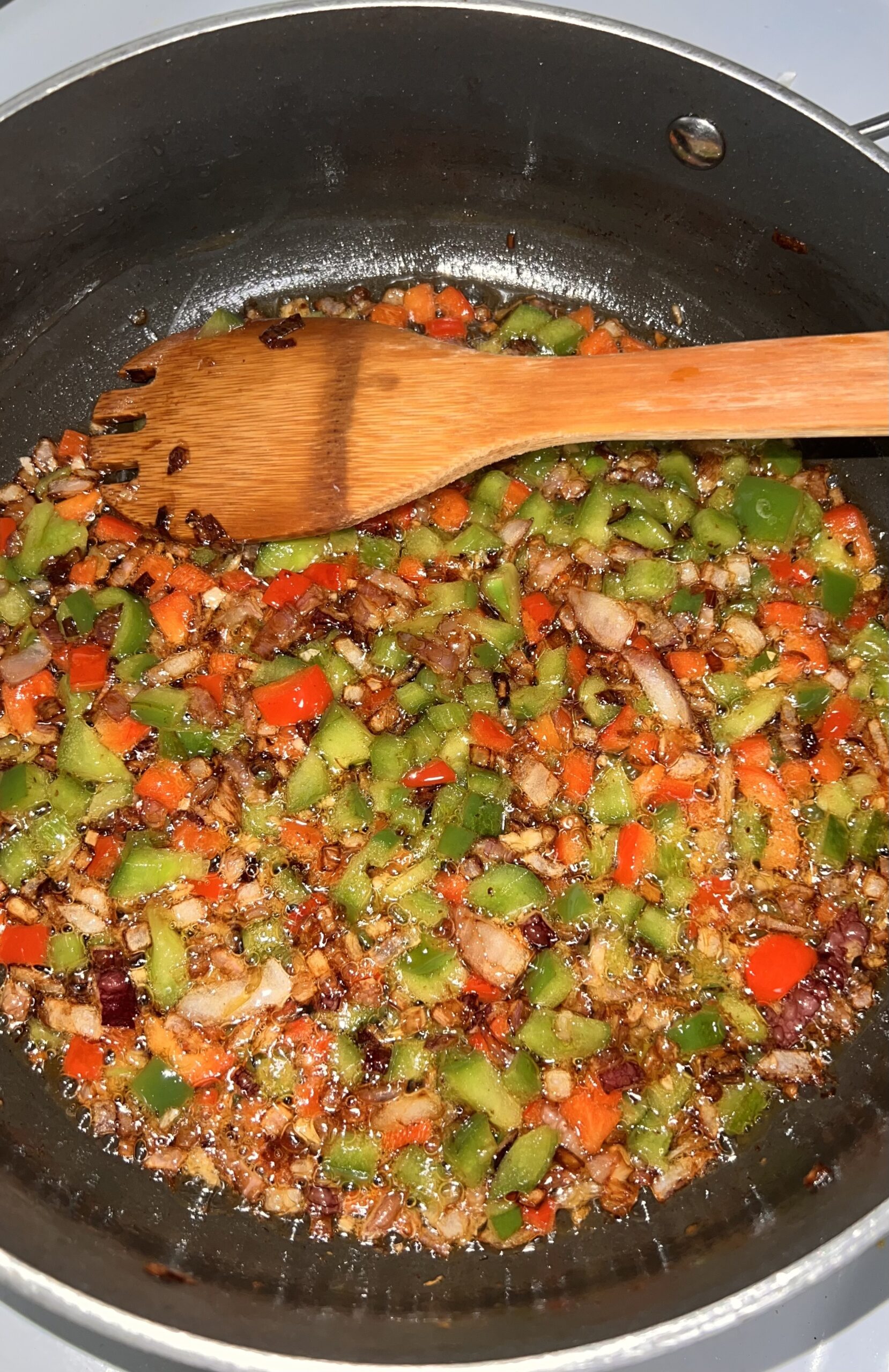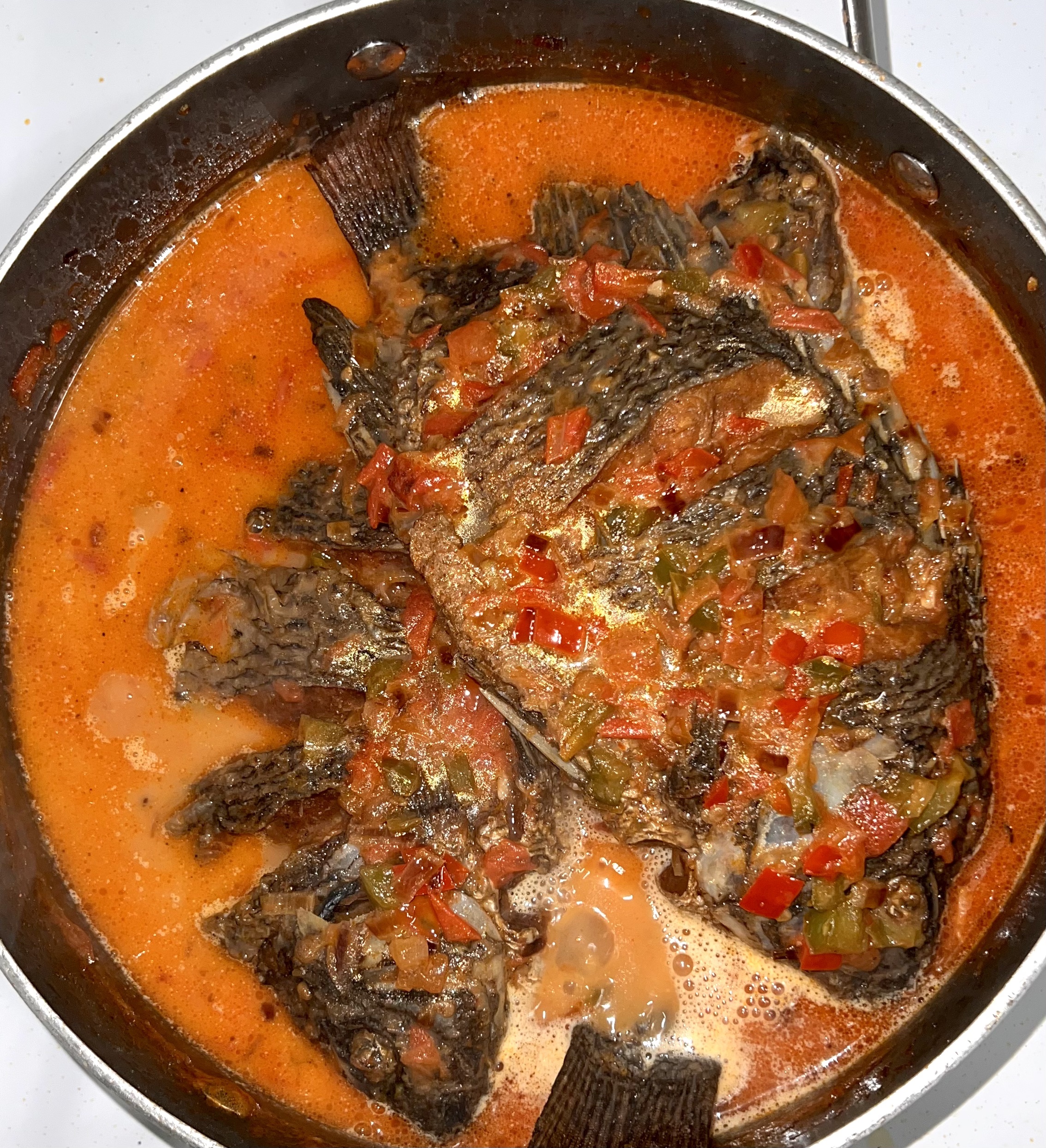This post may contain affiliate links, which means I may receive a commission from purchases made through the links.
Where is tilapia originally from?
Tilapia is a freshwater fish that is native to Africa. In my home country, Kenya, tilapia is a staple and a highly valued one at that. It is mainly harvested from Lake Victoria – the largest freshwater lake in Africa, and the second largest in the world. To tell you the truth, the Lake Victoria tilapia is to die for. Especially when they are prepared as whole tilapia as shown in the recipe herein.

Is tilapia a popular fish?
Although native to Africa, tilapia is popularly farmed and consumed around the world, especially in Asia, thanks to its desirable characteristics such as fast growth, general adaptability, low cost, mild taste, and high nutritional value. According to Wikipedia, tilapia is a popular traditional food in the Philippines and has been the fourth-most consumed fish in the United States since the early 2000s.
Where can you buy whole tilapia in the United States?
Whole tilapia is sold in most grocery stores across the United States. I have found it in Meijer, Walmart, Costco, and some Asian stores, especially South Korean stores. In Meijer and Walmart, the tilapia is usually frozen and packaged in bags of three or more. You can find it in the freezers with the rest of the seafood. In Costco and the Asian stores, you may find fresh tilapia in the fridges or on ice.
How do you cook whole tilapia?
Tilapia is easy to prepare, and it cooks in just a couple of minutes. It can be cooked whole, as we traditionally do in Kenya, or it can be cut up and prepared as fillets, which I believe is the most common way it is consumed here in the United States. As for the methods of cooking it, tilapia can be fried, stewed, baked, grilled, or boiled. In my recipe herein, I’ve combined frying and stewing to add both texture and flavor to the fish.

How to fry whole tilapia
- This short video on YouTube shows the whole process.
- Wash the fish thoroughly in running water. Pay attention to the gills and the abdomen as those parts are usually not cleaned when the fish is descaled.
- Dab the fish with paper towels to remove excess water. Then, lay it on a wide chopping board.
- Use a sharp knife to slit the fish about three times on each side. This will ensure more crispiness because the oil will penetrate further when frying. The slits do not need to be too dip but there is no harm if you slit all the way to the bone. You can sprinkle a little salt onto the fish and rub it in especially if you plan to eat it fried. This step is optional though for fish that will later be stewed.
- Add cooking oil that is enough for deep frying to a wide and deep enough frying pan (preferably, one with a flat base) and place on medium-high heat. Once the oil is hot, add the fish and fry until well browned. Fry one fish at a time If your pan is not large enough to accommodate more. Flip the fish gently and fry the other side as well. When ready, set the fish aside.
- Remember to use safety gear and to exercise caution when frying fish as the hot oil could splatter or pop.
What are the health benefits of tilapia?
- Tilapia is high in protein and low in carbohydrates, which makes it perfect for a keto diet.
- It is rich in vitamin B12 which helps our bodies produce red blood cells, make DNA, and maintain a healthy nervous system.
- Rich in vitamin D which enhances the absorption of calcium for strong bones and teeth. According to the Mayo Clinic, vitamin D also supports immune health, muscle function, and the activity of brain cells.
- A great source of omega-6 fatty acids which are essential in brain function and normal growth and development of the body (which reminds me, when I was a little girl, we used to jokingly be told that we’d be smarter if we ate more fish).
- Tilapia is also low in saturated fats and sodium, which means that choosing this fish over those with higher levels of saturated fats and sodium can reduce the chances of high blood pressure and heart disease occurring.
How does tilapia compare to other fishes?
- Compared to salmon, tilapia is much leaner, has fewer calories, and has a milder taste. This makes it a fish of choice especially for those who are bothered by the strong smell and taste of most fishes.
- Tilapia has much lower levels of mercury compared to fishes like tuna, shark, and swordfish. As such, it is considered one of the best and safest fish to be consumed by young children and pregnant or breastfeeding mothers.
It is clear from all the health benefits listed above that tilapia is a highly valuable item to include in one’s regular diet. The recipe below will allow you to enhance both the texture and taste of tilapia so that you can fully enjoy it as you also pack in all those essential nutrients.
Print The Recipe for Whole Tilapia
Whole Fried Tilapia Stew – A Popular Kenyan Dish
Course: MeatsCuisine: Kenyan, East AfricanDifficulty: Moderately difficult6
servings10
minutes20
minutes30
minutesThe fried fish should have a firm exterior so that it does not crumble in the stew. Handle the fish gently while cooking to avoid breakage.
Ingredients
Whole fried tilapia – 3
Onion – 1 medium
Garlic – 1 tbsp diced
Bell peppers – ½ @ green and red
Tomatoes – 3 small
Cooking oil – 1/8 cup
Coconut milk – 1/3 cup (optional)
Water – 2 cups
Salt to taste

Directions for frying tilapia (otherwise, skip to the next section)
- Defrost the tilapia fully if frozen.
- Wash the fish thoroughly in running water paying attention to the gills and the abdomen. Make sure those areas are clean.
- Dab with paper towels to remove excess water and lay on a wide chopping board.
- Use a sharp knife to slit each fish three times on each side (for more crispiness when frying). You can sprinkle a little salt onto the fish but that is optional.
- Add about 1 liter (or 1 quart) of cooking oil into a wide and deep enough frying pan (preferably, one with a flat base) and place on medium-high heat. Once the oil is hot, add the fish and fry until well browned. Fry one fish at a time If your pan is not large enough to accommodate more. Flip the fish gently and fry the other side as well. When ready, set the fish aside.
- Remember to use safety gear and to exercise caution when frying fish as the hot oil could splatter or pop.
Directions for fried tilapia stew- Wash, chop, and dice all the vegetables (onions, tomatoes, garlic, and bell peppers). Keep them separate.
- Place a wide enough pan or cooking pot on medium-high heat and add cooking oil to it.
- Add onions and fry until golden brown. Stir occasionally.
- Add garlic and fry for a few seconds, until just slightly brown.
- Add bell peppers and fry until fully cooked. The vegetables will appear to float in oil.

- Add tomatoes and cook until well mushed up. Then, add coconut milk and simmer for a minute.


- Add water and salt to taste. Stir to combine.
- Add the fried tilapia to the pot. Use a ladle to scoop the sauce and baste the tilapia on the top side. You do not want to move the fish too much as it could break, so basting ensures both sides soak up the sauce. Cover, reduce the heat and simmer for 7-10 minutes.

- Serve with your favorite sides. This stew would go well with ugali, white rice, chapati, and green leafy vegetables such as kale and spinach among others (find links to great recipes below).
Recipe Video

Serving suggestions for whole tilapia stew

Serve your tilapia stew with any of the following sides or a combination of sides. Linked to recipes.
- Perfect white rice
- Soft and delicious chapati
- Ugali
- Sautéed spinach
- Sautéed kale
- Sautéed kale with eggplant and carrots
- Sautéed cabbage with carrots and bell peppers
Storing leftover whole tilapia stew
Cooked fish can be stored in the freezer for up to 3 months or in the fridge for up to four days according to the USDA. Place cooked tilapia in an airtight container and store it in either of these spaces depending on how soon you intend to use it.
Reheating leftover tilapia stew
In the microwave: Place defrosted or refrigerated tilapia stew in a large bowl or plate, cover, and heat in the microwave for about two minutes or until hot enough.
On the stovetop: Place defrosted or refrigerated tilapia stew in a pot and cook on medium-low heat until hot enough. If it is too dry, add 1/8 cup of water so you have some soup left when it is ready.

Conclusion
Tilapia is a highly nutritious white fish that is a great source of animal protein for those who seek an alternative to red meat. It is easy to prepare, quick to cook, and adaptable to almost all methods of cooking. Thus, it is a versatile dish that can go with a wide variety of sides. I hope you try this recipe and that you enjoy your tilapia.











